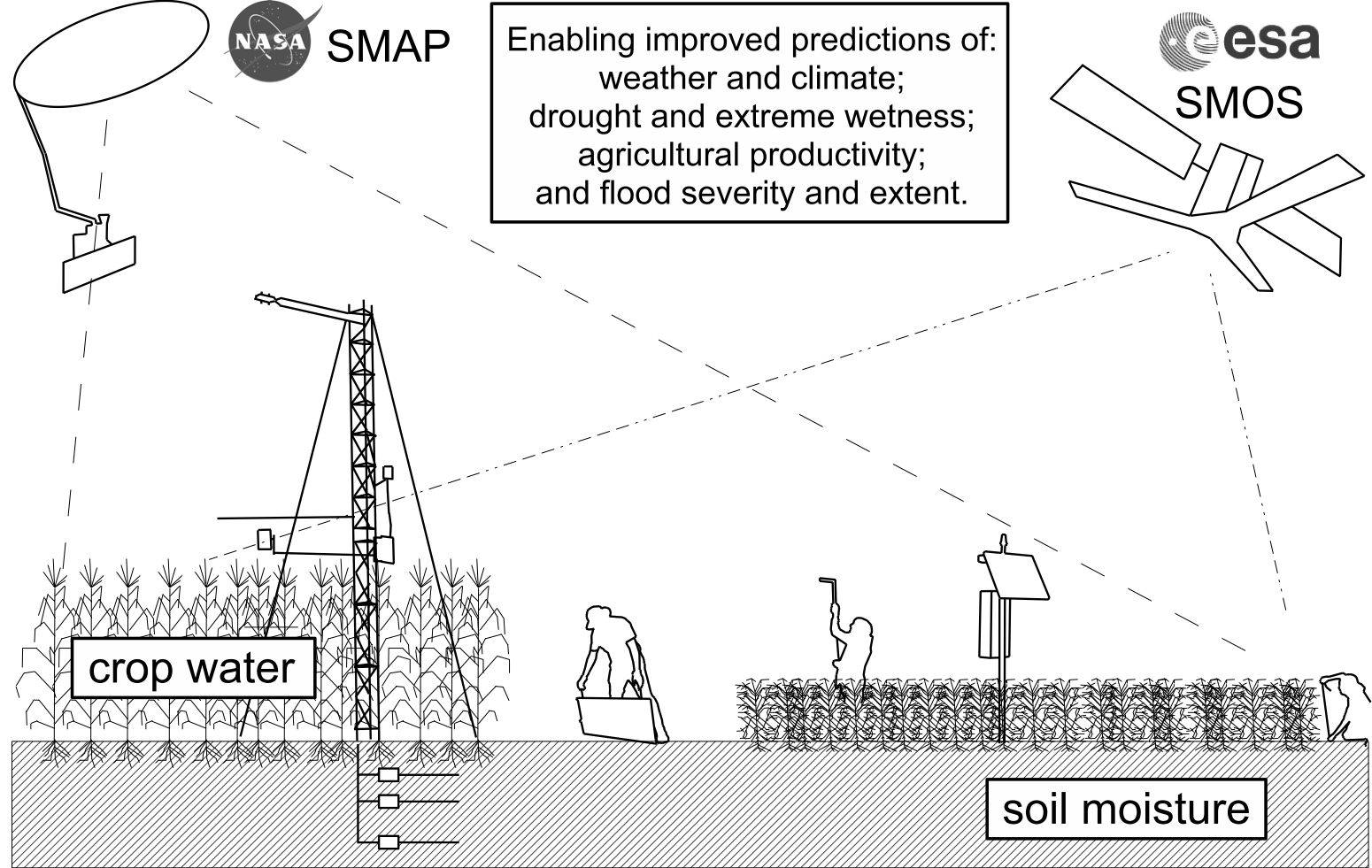Agricultural meteorologists strive to understand the transfer of energy (via radiation, conduction, or convection), as well as the associated movement of mass (e.g., water and carbon), within the soil–plant–atmosphere continuum with an emphasis on how the atmosphere influences, and is influenced by, crops. Proper treatment of this two–way interaction between crops and the atmosphere in numerical weather and climate models will improve their predictions and greatly benefit society.
My research group develops and tests models used to translate measurements made by Earth–orbiting microwave remote sensing satellites launched by NASA and the European Space Agency into useful observations of soil moisture and crop water. Our work, which emphasizes the role of in situ measurements in the validation of these remotely sensed observations, is summarized in the figure. Soil moisture is the water stored in soil that can be transferred to the atmosphere through evaporation or plant transpiration. Crop water is the water in plant tissue, which increases as crops grow and decreases as they progress through reproductive stages, senesce, and reach maturity.
Microwave remote sensing is a valuable agronomic tool since it is able to “see” liquid water in soil and vegetation due to water’s unique electrical properties in the microwave region of the electromagnetic spectrum. When viewed by a microwave remote sensing instrument, Earth’s land surface looks “bright” when soil moisture is low and “dark” when the soil is wet. The microwave radiation emitted by the soil can be detected through crops because of its relatively long wavelength, in contrast to visible and infrared radiation. However, crops do affect this signal, and consequently microwave remote sensors can also perceive water residing within, as well as on, plant tissue.
Soil moisture observed by satellite will improve weather and climate forecasts for two main reasons. First, soil moisture influences energy and mass transfer at Earth’s surface. Furthermore, this influence is greatest during weather extremes, and thus soil moisture information is critical in order to make accurate predictions of drought and periods of extreme wetness. Second, microwave remote sensing satellites provide data that is self–consistent and available at least every two or three days over the entire globe. In addition to having a great influence on weather and climate, soil moisture also impacts infiltration of precipitation. Consequently, new satellite data will be used to improve flood forecasting. However, satellite soil moisture is currently “too dry” in agricultural regions as compared to ground measurements. My research group is working to fix this problem.
Observations of crop water made with microwave remote sensing satellites will complement existing satellite remote sensing products and thus enhance monitoring of crop productivity. They also will be used to verify that the feedbacks between crops and the atmosphere, which evolve as crops grow and progress through their phenology, are being properly accounted for in weather and climate models. But this type of satellite product does not yet exist. My research group is working to create it.
